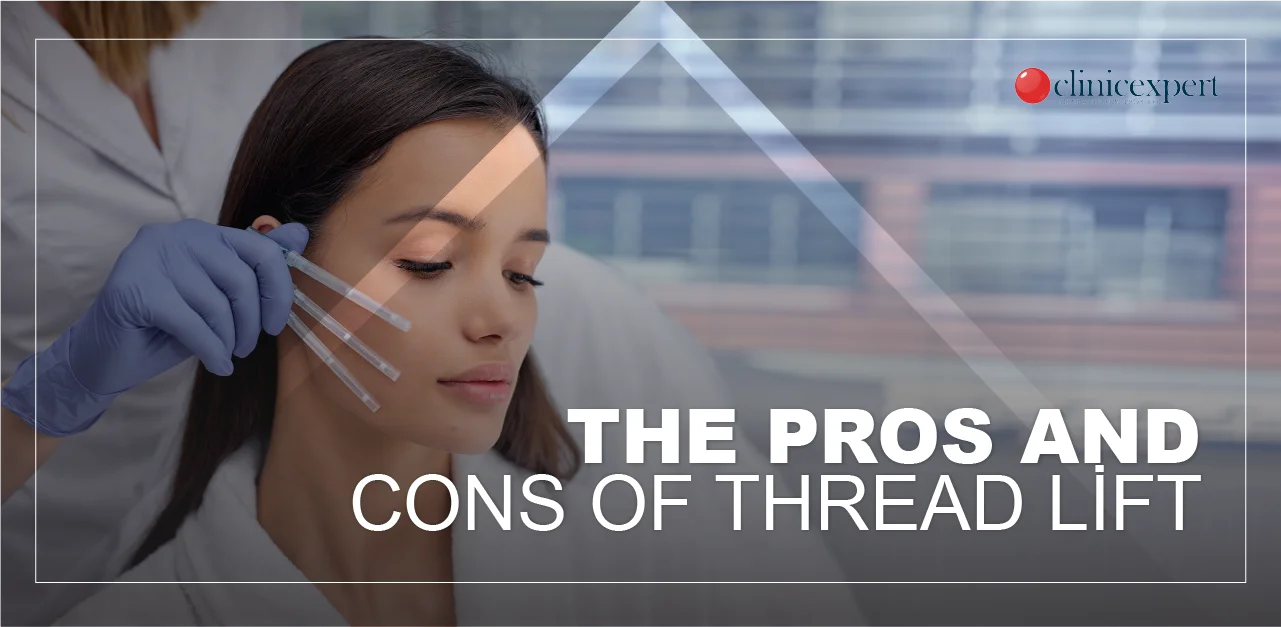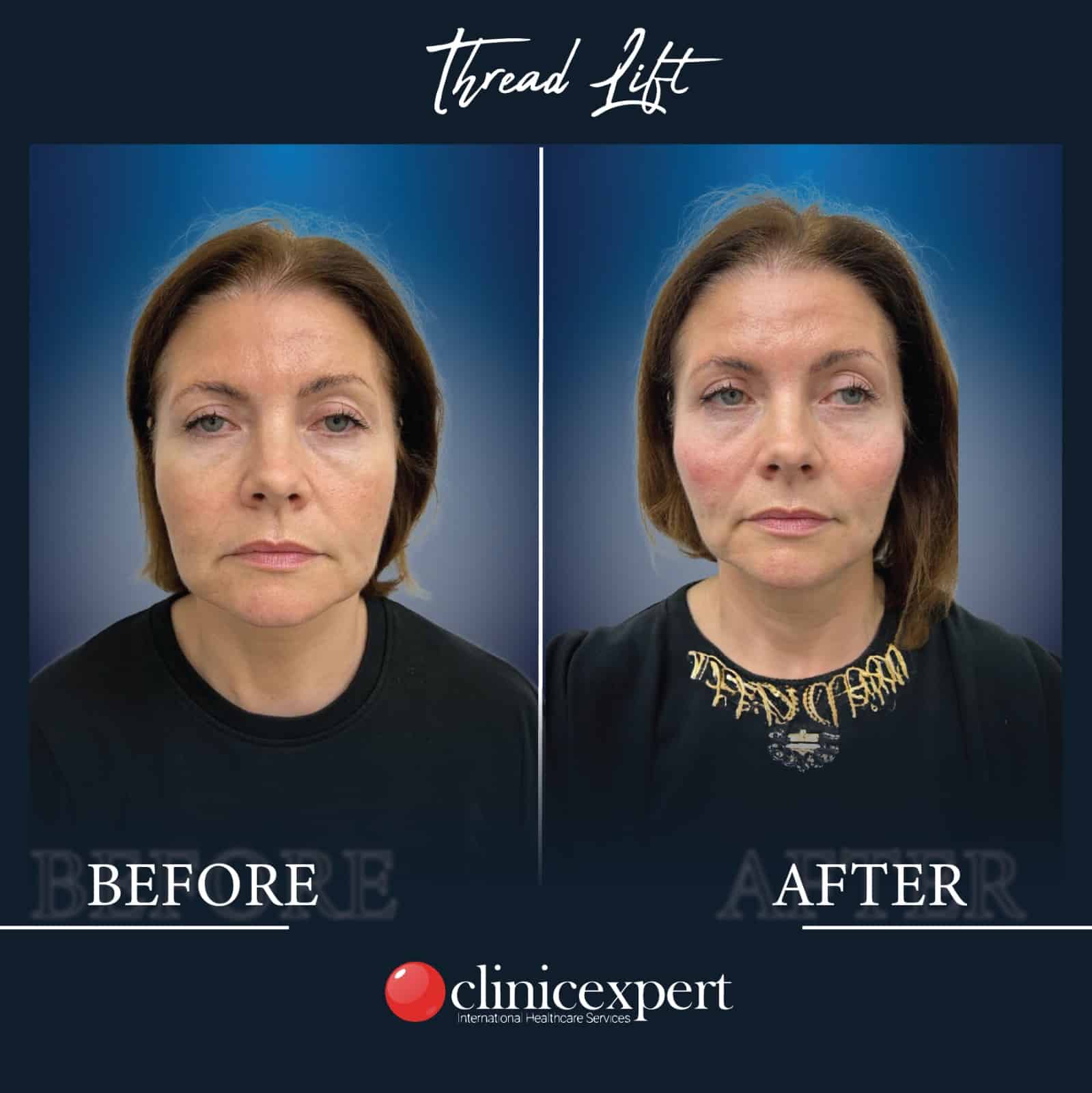Are There Any Disadvantages of Thread Lift?
A thread lift, often referred to as a non-surgical facelift, is a minimally invasive cosmetic procedure. Despite being a relatively safe alternative to surgery, a thread lift does carry some level of risk for potential complications. So, yes there may be disadvantages of a thread lift, just like any treatment.
The main aim of a thread lift is rejuvenating and tightening facial skin. This innovative technique utilizes specialized threads carefully placed beneath the skin’s surface to lift and support sagging tissues. Therefore, it can result in a more youthful and lifted appearance. Unlike traditional surgical facelifts, thread lifts offer the advantage of reduced downtime and a quicker recovery period.
Individuals considering this procedure should thoroughly consult with a qualified medical professional to determine if it’s the right option for their cosmetic goals and overall health.
What are the Pros and Cons of a Thread Lift?
A thread lift, as a non-surgical cosmetic procedure, presents individuals with a range of benefits and considerations. Before opting for this technique, it’s essential to weigh the pros and cons to make an informed decision about whether it aligns with your aesthetic goals and preferences. By understanding both the advantages and potential drawbacks, you can better navigate the choices available to you. Let’s delve into the pros and cons of a thread lift procedure to gain a comprehensive perspective on this innovative approach to facial rejuvenation.
Advantages of Thread Lift
- Minimally Invasive: One of the key advantages of a thread lift is its minimally invasive nature. Thread lifts involve smaller incisions, which generally result in reduced scarring, less discomfort, and a shorter recovery period.
- Natural-Looking Results: Thread lifts are popular for providing subtle and natural-looking results. By strategically lifting and supporting sagging skin, the procedure enhances the contours of the face without appearing overly tight or “pulled.”
- Collagen Stimulation: The insertion of threads into the skin prompts a natural healing response, stimulating the production of collagen—the protein responsible for skin’s firmness and elasticity. This ongoing collagen synthesis can contribute to longer-lasting results beyond the immediate lifting effect.
- Quick Procedure: Thread lift procedures are typically quicker to perform compared to surgical facelifts. A thread lift can often be completed within an hour.
- Minimal Downtime: Since the procedure is less invasive, downtime is significantly shorter. Most individuals can resume their normal activities relatively quickly, although some temporary swelling, bruising, or mild discomfort may occur.
- Adjustability: Unlike surgical results, thread lift outcomes can be adjusted to some extent if needed. If the initial lift is not as pronounced as desired, additional threads can be added later to achieve the desired effect.
- Local Anesthesia: Thread lifts can often be performed under local anesthesia, minimizing the risks associated with general anesthesia and making the procedure more accessible to a wider range of patients.
- Volumizing your face: A thread lift will rejuvenate your face in a way that can positively alter the appearance of your skin. Your face will be more contoured.
- Insant effect: Although a thread lift will not last you for an eternity, you will see the results instantly.
Disadvantages of Thread Lift
Though there are many different benefits, there can also be some disadvantages that come with having thread lift procedure done. Some of the disadvantages of thread lift are as follows:
- Temporary Results: Yes, thread lifts can provide noticeable improvements. However, the results are not as long-lasting as those achieved through surgical facelifts. Over time, the threads can gradually dissolve, and the lifting effect may diminish.
- Limited Lift: Thread lifts are better suited for individuals with mild to moderate sagging. Those with more significant sagging may not achieve the desired level of lift and longevity from this procedure.
- Risk of Complications: Although less invasive than surgery, thread lifts are not without risk. Potential complications include infection, thread migration, puckering of the skin, and visible or palpable threads beneath the skin.
- Uneven Results: Achieving symmetry and uniform lifting with thread lifts can be challenging. There is a possibility of uneven results, where one side of the face appears lifted differently from the other.
- Skill-Dependent: The success of a thread lift heavily relies on the skills and expertise of the practitioner performing the procedure. Choosing a qualified and experienced professional is crucial to achieving the desired outcome and minimizing risks.
- Cost: Thread lifts are generally more affordable than surgical facelifts. But they still involve costs for the procedure itself and potential follow-up sessions. Over time, these costs can add up.
- Limited Area: Thread lifts are most common for specific facial areas, such as the midface and jowls. They may not be suitable for addressing concerns in other areas, such as the neck or forehead.
- Side Effects: Temporary side effects such as bruising, swelling, and discomfort are common after a thread lift. These effects usually subside within a few days to a week but can impact daily activities during that time.
- Patient Selection: Not everyone is an ideal candidate for a thread lift. Individuals with certain medical conditions or skin types may not be suitable candidates.
Thread Lift Risks
Like any other surgical procedure, there are several risks that you may need to take into consideration when getting a thread lift done. However, if you choose your surgeon carefully and opt for a medical professional, you can minimize these complications. Some examples of such risks are as follows:
- Anesthesia: Your doctor will run some tests to see if you can withstand anesthesia or not.
- Infection: Thread lifts can cause infection if your skin is prone to it. However, your doctor will provide you with the required information if such an instance occurs.
- Persisting pain: Though pain is to be expected in the first days or weeks, it is better to consult a medical professional if it does not go away.
- Swelling and bruising: Similarly to persisting pain, some swelling and bruising is expected. However, you might want to check in with your doctor if these side effects do not go away.
- Sensitivity to light: If you already have migraines, you might want to consult your doctor before getting the procedure done. It is rare but likely to be more sensitive to light when you get a thread lift.
Keep in mind that your doctor will inform you the best. What’s more, it is expected to see some of the side effects immediately after the procedure. However, if these uncomfortable effects persist, you might want to get it double checked.
Why Is Facelift a Better Option than Thread Lift?
Should you opt for a facelift or a thread lift? While thread lifts offer certain advantages in terms of minimal invasiveness and quicker recovery, there are instances where a surgical facelift might be a more suitable and effective option for achieving comprehensive facial rejuvenation. Surgical facelifts provide several benefits that can address concerns beyond what a thread lift can offer. These include the longevity of results, a customized approach that targets specific areas of concern, significant correction of sagging, consistent and predictable outcomes, the option for combining procedures for a holistic rejuvenation, the expertise of experienced plastic surgeons, and the ability to address multiple layers of tissue for a comprehensive and natural-looking enhancement.
However, the choice between a thread lift and a surgical facelift ultimately depends on individual preferences, aesthetic goals, and medical considerations. Consulting with a board-certified plastic surgeon can provide the necessary guidance to make an informed decision that aligns with one’s desired outcomes for facial rejuvenation.


